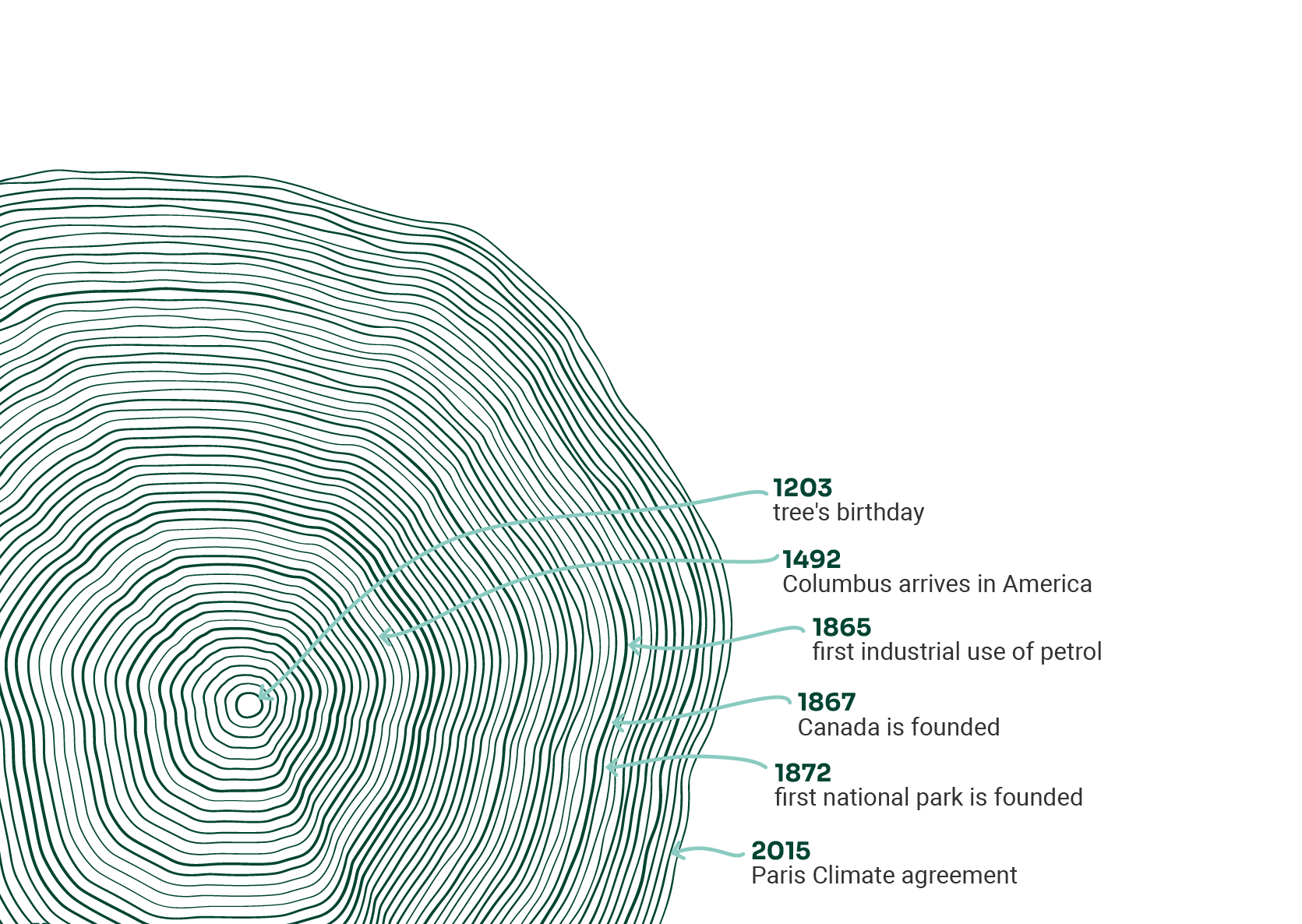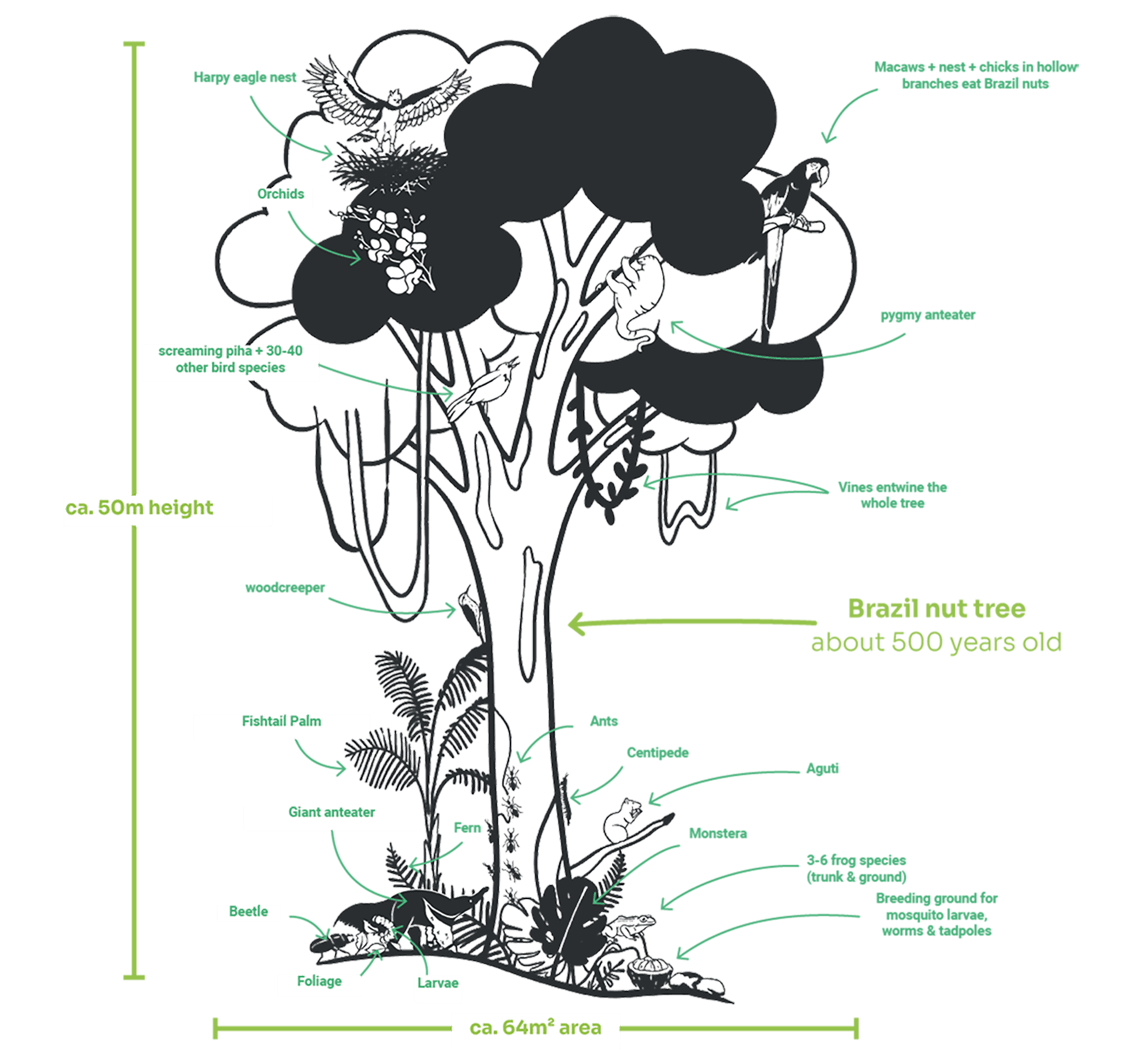How we protect forest
Effective, transparent and directly traceable

A tree has a lot to tell
Some of the giant trees in the forests that we want to protect are already 1,000 years old. And they could live for another 1,000 years. How can we ensure that they are not destroyed before then?
For all the future
During our fleeting human lives, we can only protect a tree in the short term. We therefore want to create structures that guarantee the protection of these ancient creatures for generations to come - regardless of political changes.

How we protect wilderness.
Our guide to saving the world.

1
Find land plot
In rapid assessments, we work with researchers to determine the conservation value of a forest area. The decisive factors are whether the area has a high level of biodiversity and CO2 storage capacity, whether it is under threat and whether it is located in a strategically important place.
2
Buy in advance
The purchase of the land is financed with loans. We do not collect donations for land that we do not yet own.
3
Obtain land registry entry

4
Create aerial images
5
Refinance through donations
6
Prove by certificate with geo-coordinates

7
Research, document, communicate
8
Ensure long-term protection
Regular visits, local partnerships, forest guardians, property taxes and the foundation concept ensure the long-term protection and ecological integrity of the areas.
Here you can find out more about the local forest guardians who ensure the protection of our areas in Peru.
Save the rainforest now!
Playful monkeys, rare coastal wolves and centuries-old trees - the rainforests of our earth are not only a wonder of nature, but also essential for a livable future. Together with Wilderness International, you can protect them forever.
Would you like to travel to Canada or Peru?
Then visit our interactive forest! There you can virtually travel to our protected areas, take a look at the different regions in a 360° view and discover lots of exciting audio snippets, videos and picture galleries from our expeditions. You can even stand under a majestic old-growth tree and experience the forest you are protecting (almost) up close!

Do you want to protect forests regularly?
Take out a nature conservation subscription and protect a growing area of valuable habitat on a monthly or annual basis. The subscription can be canceled at any time.
The old-growth forest I am standing in right now is thousands of years old, if not hundreds of thousands. This ecosystem has developed over so many years and has become so tightly knotted that it would not only be a shame to lose the ecosystem - it would be a dramatic loss.
Robert Marc Lehmann
Environmentalist, photographer, marine biologist
.jpg?u=30)

